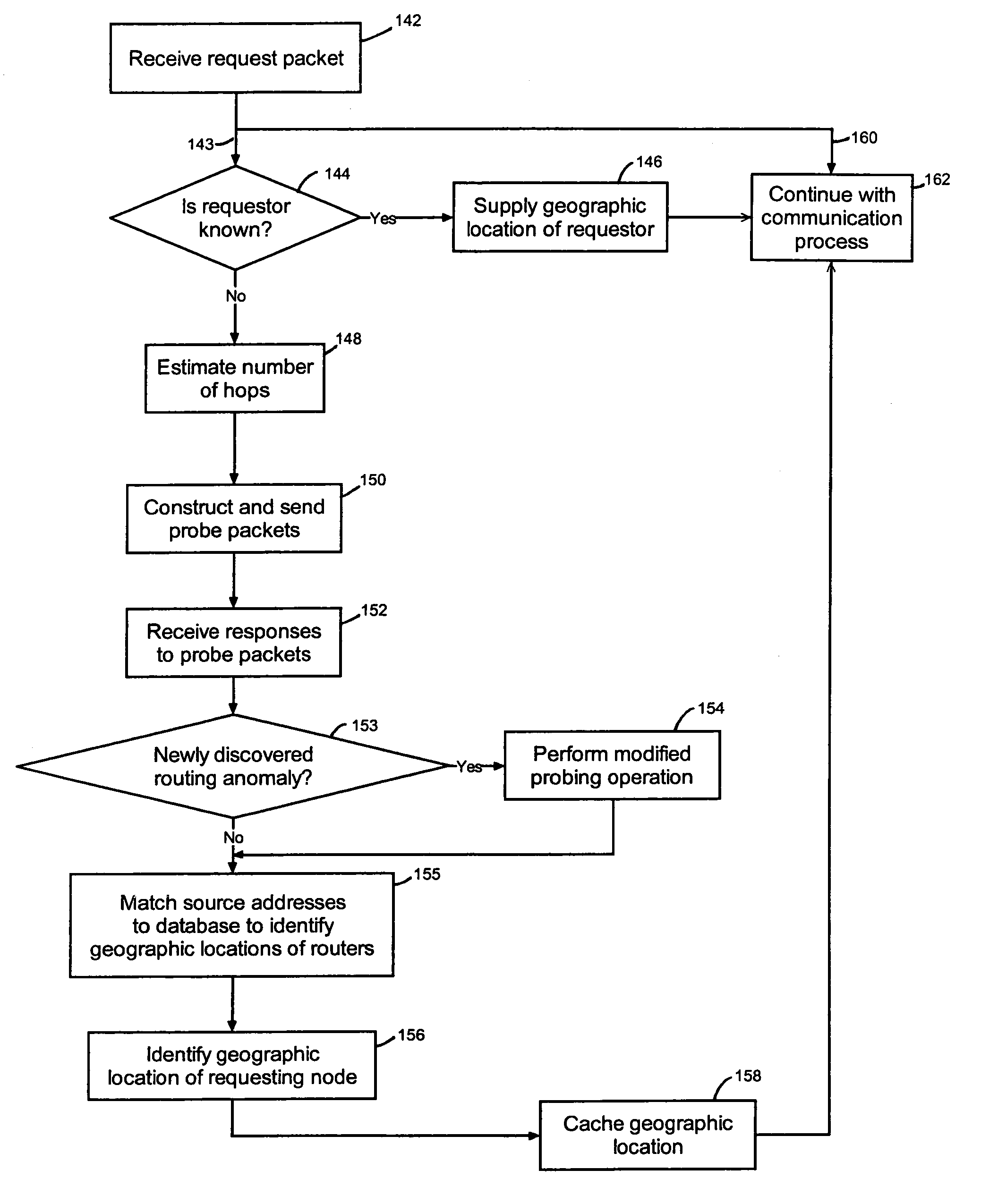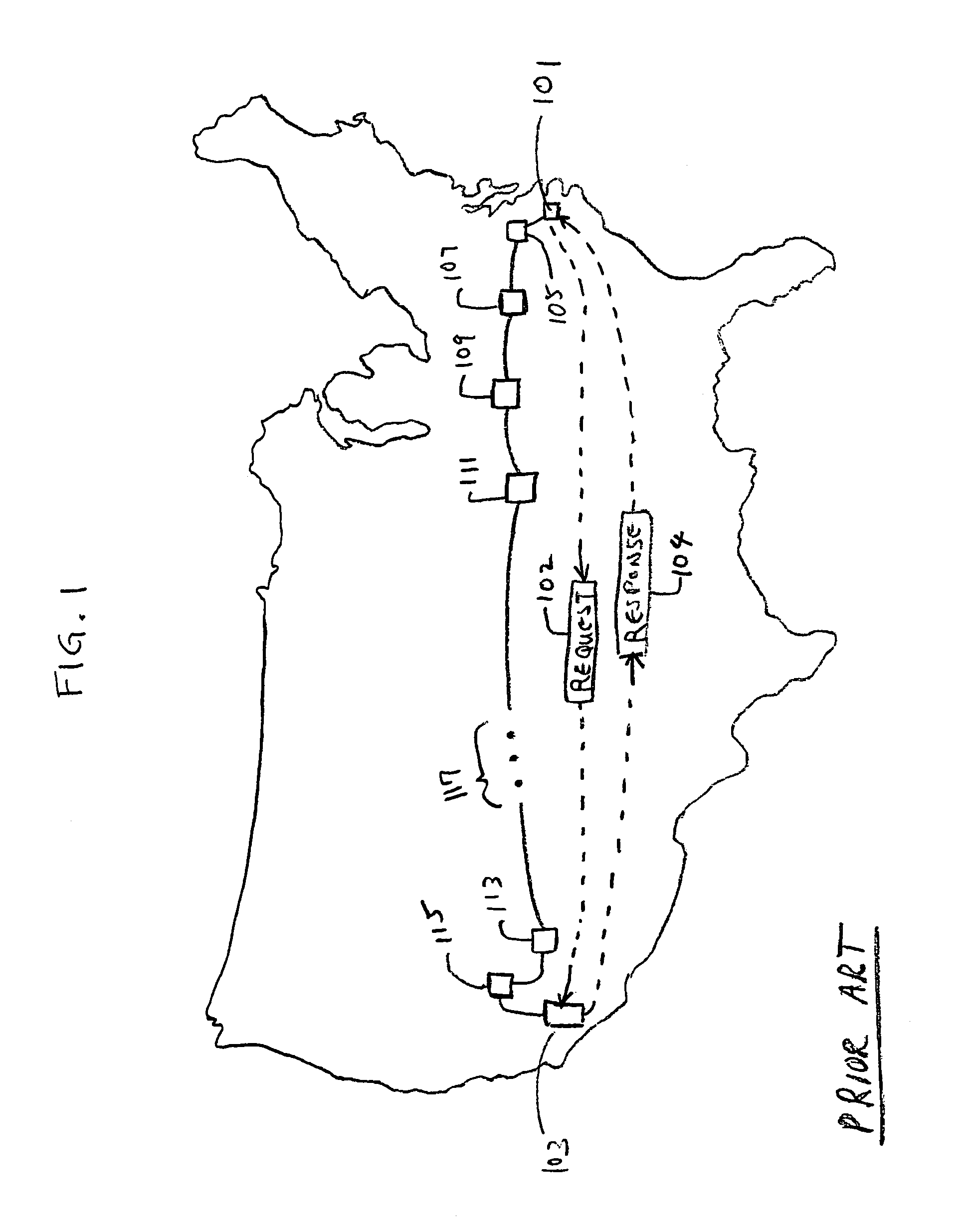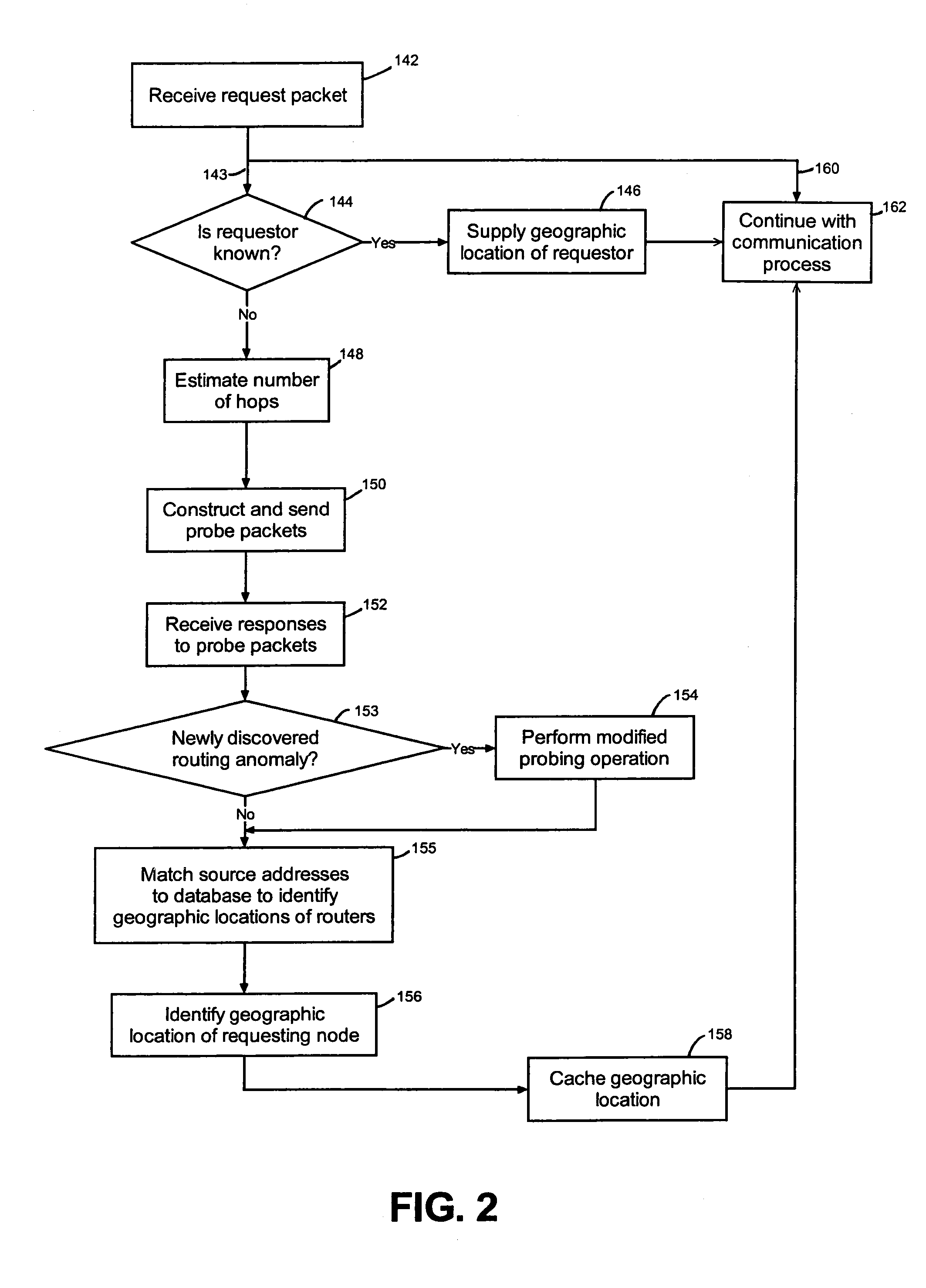Determining the geographic location of a network device
a network device and geographic location technology, applied in the direction of location information based services, multi-programming arrangements, instruments, etc., can solve the problems of asymmetric routing, long delays, and many users not wanting to expend the effort necessary to type in addresses
- Summary
- Abstract
- Description
- Claims
- Application Information
AI Technical Summary
Benefits of technology
Problems solved by technology
Method used
Image
Examples
Embodiment Construction
)
[0031]The following discussion describes the preferred embodiments of the invention. Wherever possible, the same reference numbers are used throughout the drawings to refer to the same or like parts. The patent applications for “Creating a Geographic Database for Network Devices” and “Network Probing Using Overlapping Packets” filed by Steven Augart concurrently herewith are hereby incorporated by reference as though set forth herein in full.
Geographic Positioning.
[0032]An overview of geographic positioning according to a representative embodiment of the invention will be described with reference to the flow diagram illustrated in FIG. 2. Briefly, according to FIG. 2, a request packet is received; if a geographic location has already been determined for the requestor, that geographic location is used as the location of the requestor; otherwise, the number of hops taken by the request packet is estimated, probe packets are constructed and sent, and responses to the probe packets are...
PUM
 Login to View More
Login to View More Abstract
Description
Claims
Application Information
 Login to View More
Login to View More - R&D
- Intellectual Property
- Life Sciences
- Materials
- Tech Scout
- Unparalleled Data Quality
- Higher Quality Content
- 60% Fewer Hallucinations
Browse by: Latest US Patents, China's latest patents, Technical Efficacy Thesaurus, Application Domain, Technology Topic, Popular Technical Reports.
© 2025 PatSnap. All rights reserved.Legal|Privacy policy|Modern Slavery Act Transparency Statement|Sitemap|About US| Contact US: help@patsnap.com



